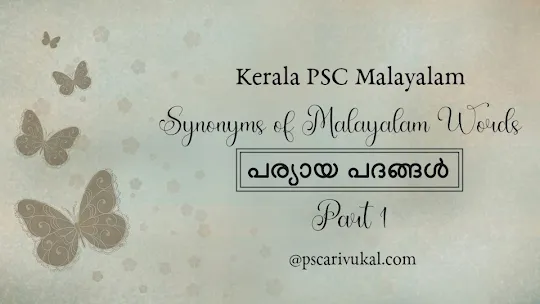It originates from the Sivagiri peaks of Sundaramala hills in Tamilnadu, flows a short distance towards the north to reach Periyar Lake from where continues its journey through the districts of Idukki and Ernakulam and finally empties into the Kodungallur lake, Arabian Sea.
So it is aptly nicknamed as the "Lifeline of Kerala."
Basic Facts about Periyar
- Length – 244 km.
- Origin – Sivagiri Hills, Sundaramala (Tamil Nadu).
- Mouth – Kodungallur lake, Arabian Sea.
- Epithets – Lifeline of Kerala.
- Longest river in Kerala.
- The only longest river runs within Kerala.
- Maximum no. of tributaries.
- Holds most of the hydroelectric projects & dams in Kerala.
- The first tributary that joins Periyar – Mullayar (at Mullakudi).
- The largest hydroelectricity project – Idukki Hydro Project.
- The Idukki dam is located where the Periyar meets with – Cheruthoni river.
- Famous places on the banks of river Periyar – Aluva, Aluva Adwaithashram, Kaladi, Malayattoor Church, Thekkady, & Neriyamangalam.
- Periyar National Park & Thekkady Wildlife Sanctuary (Periyar Elephant & Tiger Reserve).
The Periyar has two mouths. The north-trending Mangalapuzha branch joins Chalakudy River and empties into the Lakshadweep Sea at Munambam and the Marthandavarma branch flows southwards, drains into the Cochin backwater system (part of Vembanad Lake) at Varappuzha.
- Mangalapuzha → Chalakudy River → Lakshadweep Sea at Munambam.
- Marthandavarma → Cochin backwater system at Varappuzha.
The Vembanad backwaters, in turn, are connected to the Lakshadweep Sea at Cochin and Kodungallur.
- Meeting point of the Periyar and Chalakkudi rivers – Puthenvelikara.
Names of Periyar
In Kautilya's Arthashastra, there is a mention of Periyar as "Choorni" where "Chaurneyam" ( a type of precious pearls) was in abundance. Periyar was also known as the "Choorni/Churna river" in Sangham literature and in Sukasandesham.
It is also called as "Aluvappuzha" as Aluva town is situated on its bank. There it divides into the Marthamdan river and Mangalapuzha.
The other names of Periyar are "Purna, Porunai, Poruntham, Kaladippuzha & Thamraparni."
Major Floods occurred on river Periyar
- The Great deluge of 1341 – Emergence of Cochin Port & destruction of Kodungallur Port.
- The Great flood of July 1924 (flood of 99).
- Floods of August 2018.
25 percent of Kerala's industries are along the banks of the river which also contributes to the water pollution of the lower Periyar especially the industries in the Eloor industrial zone.
Tributaries, Dams & Hydro-Electric Projects across River Periyar
Dams on Periyar
- Mulla Periyar
- Idukki
- Bhuthathan Kettu
- Mattupetty
- Munnar
- Cheruthoni
- Kulamavu
- Irattayar
- Edamalayar
- Anayirangal
- Ponmudi
Major Tributaries of Periyar
- Muthirappuzha
- Edamalayar
- Mullayar
- Perunthurayar
- Kattappanayar
- Cheruthoniyar
- Muthayar
- Perunthuraiar
- Chinnar
- Cheruthony
- Kattappanayar
- Thottiyar
Major Hydro-Electric Projects in Periyar
- Idukki hydroelectric project
- Pallivasal hydroelectric project
- Chenkulam hydro-electric project
- Panniyar hydro-electric project
- Neriyamangalam hydro-electric project
- Lower Periyar hydro-electric project
📝SideNotes:
- Perennial – present at all seasons of the year.
- Famous Personality of Ancient India who referred Periyar as "Purna" – Sankaracharya.
- Adisankara Keerthi Sthambha Mandapam is situated on the banks of – Periyar.
- Periyar Lake – an artificial reservoir (31 square km) at an elevation of 2,800 feet created by damming the river from which a tunnel carries water eastward through the mountains to the Suruliyar, a tributary of Vaigai River in Tamil Nadu, where it is used for irrigation and drinking purposes in the 5 drought-affected districts.
- Eutrophication – When an aquatic system becomes overly enriched with minerals and nutrients which induce excessive growth of plants and algae ie, algal boom resulting in the depletion of oxygen in the water. It is mainly due to the discharge of nitrate or phosphate-containing detergents, fertilizers, or sewage into the river.
- World's second & Asia's first arch dam – Idukki Dam.
- Biggest underground hydro-electric project in India – Moolamattom Power Station.
- Tail waters flows into – Thodupuzha river (Tributaryof Muvattupuzha).
- Pallivasal hydroelectric project –
- Idukki district,
- 1st Hydro-Electric Project in Kerala,
- Commissioned in 1940,
- Water Source – Muthirapuzha/Periyar River
- Sukasandesham was translated by – Kodungallur Kunjikuttan Thampuran.
- In there, Periyar is also translated as 'Marudvutha.'
- 'Periyare Periyaare...,' a superhit Malayalam song at the time, was composed by – G. Devarajan.
- Film – Bharya (1962), based on novel of the same title written by Kanam EJ.
- Singers – P. Susheela & A. M. Rajah.
- Lyrics – Vayalar Rama Varma.
- 'Puzhayorazhakulla Pennu....' was another superhit song about river Periyar sung by – K. J. Yesudas.
- Film – Ente Nandinikkuttikku (1984; by Valsan).
- Lyrics – ONV Kurup.
- Music – Raveendran.
- Eloor – Island municipality lies between Periyar & its tributary Muttar river in Ernakulam district witnessed massive fish deaths and change in watercolor due to the location of about 247 chemical industries of which 79 are in the ‘Red’ category along the banks of the river. Fertilizers and Chemicals Travancore Ltd (FACT) is also located in Eloor.
- Red Category Industries – Industrial sectors having Pollution Index (PI) (issued by Central Pollution Control Board) score of 60 and above. That means these industries produce massive amounts of hazardous emissions, waste, and effluents consumes natural resources excessively and harms the environment.
Questions about Periyar will be helpful for those who are preparing for the KAS exam, assistant engineer exams, Secretariat assistant, deputy collector exam, LDC, exam, other GK exams, etc as it is the most commonly repeated question in the PSC Papers.









Post a Comment
Post a Comment